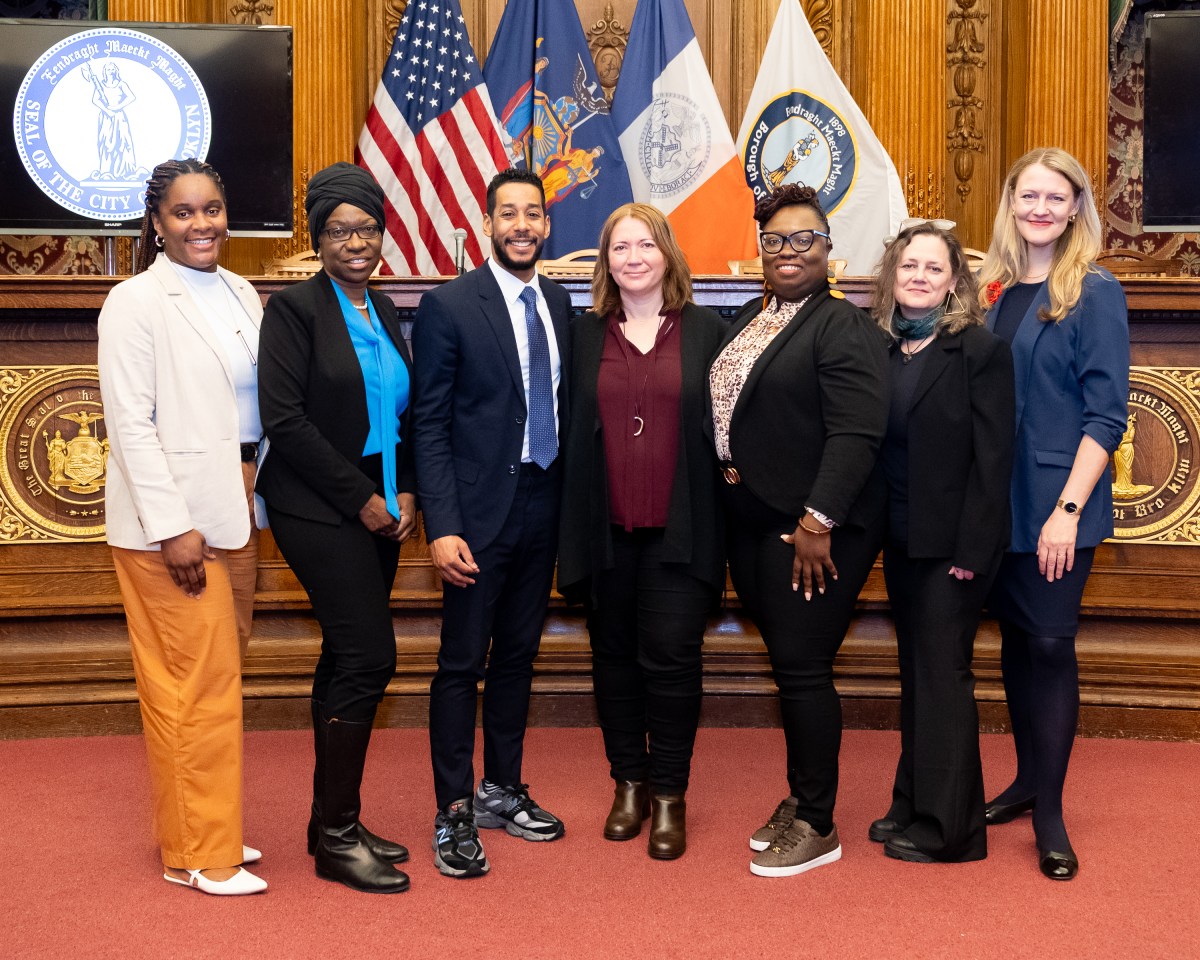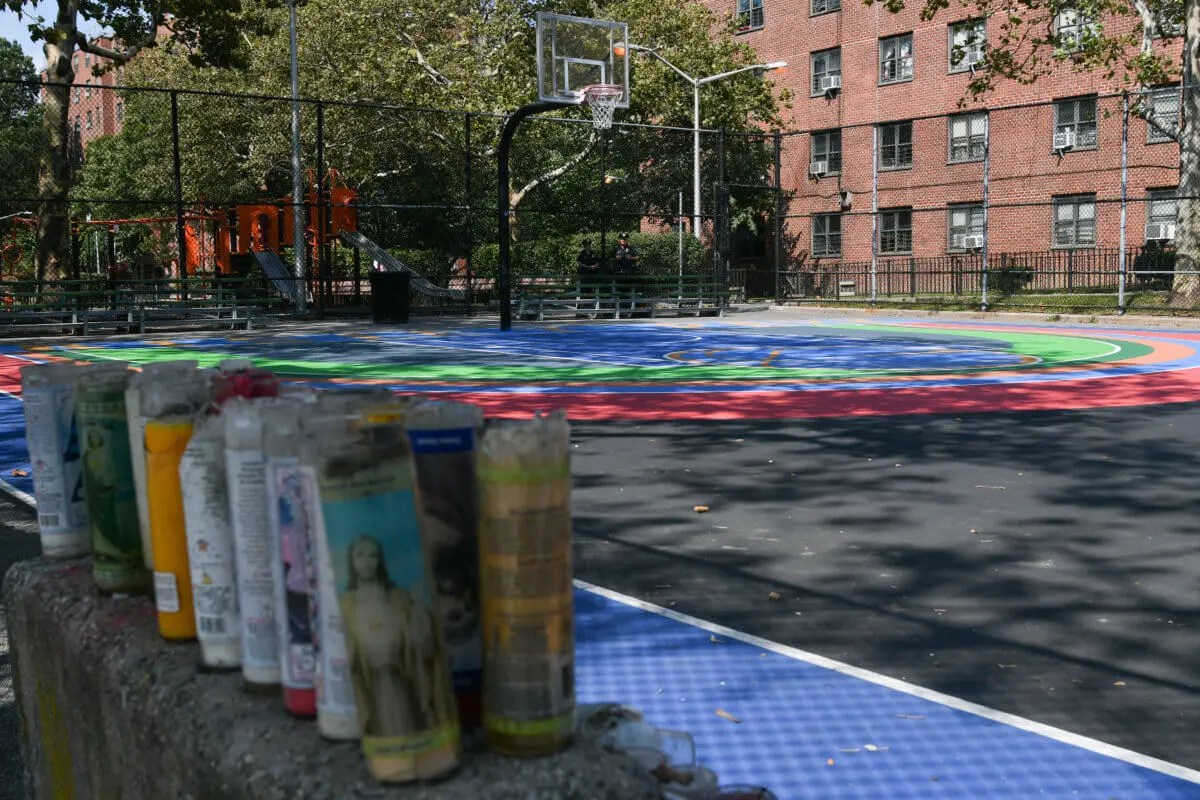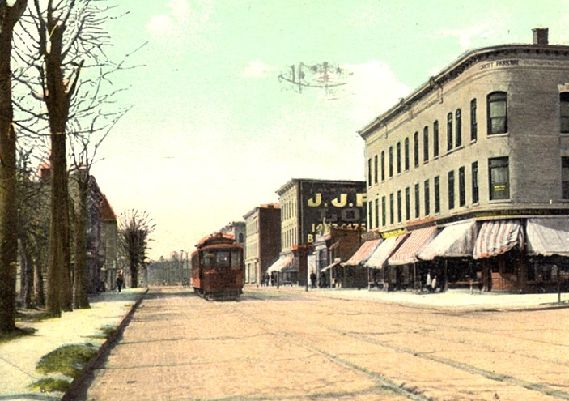
Upper West Side resident Olga Cook was struck and killed last month by an allegedly intoxicated driver while biking across Chamber St. along the Hudson River Greenway, which parallels the West Side Highway. Her death has spurred renewed interest in improving safety at the notorious intersection.
BY COLIN MIXSON
The city says it will study ways to make a deadly Battery Park City intersection safer after a cyclist was killed by a hit-and-run run driver last month.
Upper West Side resident Olga Cook was fatally struck by an allegedly intoxicated driver on the Hudson River Greenway at Chambers St. on June 11, leading Community Board 1 to call on the city’s Department of Transportation to install better signaling at the intersection, which is notorious among locals.
Cook was an avid cyclist and triathlete, who cycled along the greenway bike path as part of her daily training regimen. That someone so accustomed to cycling in that area could be struck by a driver highlights how dangerous that intersection truly is, according to her husband.
“If it could happen to her, it could happen to anybody,” said Travis Maclean. “She is the most intelligent woman I ever met.”
Cook was heading northbound on the greenway — which parallels the West Side Highway — at 7:52 p.m. on June 11 when, as she crossed Chambers St., a driver heading southbound on the West Side Highway turned right and slammed into her. As Cook lay bleeding on the street, the driver fled, only to be spotted three blocks away by an off-duty MTA police officer, who promptly arrested the suspect.
Cook was pronounced dead little more than a half hour later at Bellevue Hospital.

Travis Maclean stands beside the memorial to his wife Olga Cook on a light pole on the Hudson River Greenway near where she was struck and killed by hit-and-run driver while she cycled across the greenway’s notorious intersection with Chambers St. on June 11.
The light pole nearest the accident is now covered with a shrine of stuffed animals, love letters, and bouquets of fresh sunflowers — Cook’s favorite — which are replaced daily by her family as well as by a nearby Chamber St. resident who has taken it upon herself to honor a woman she never met, in part because she feels Cook’s death represents the danger faced by everyone at that infamous intersection.
“I just feel like it could have been me,” said Rossella Livraga. “It could have been my son. It could have been anybody.”
Even before Cook’s death, the intersection at Chambers Street and the West Side Highway had a notorious reputation, according to Livraga.
“That intersection is dreadful,” she said. “I’m scared every time I cross.”
Already this year, there have been one bicycle injury and one pedestrian injury, in addition to four motorist injuries there, according to Brian Zumhagen, a spokesman for the bike-advocacy organization Transportation Alternatives.
Transportation Alternatives has made several recommendations to improve safety at the intersection, ranging from changes to signaling so that cyclists going straight on the greenway and drivers making turns have separate signal phases, to raising the greenway where it crosses Chambers St. to a higher grade than the road — like a speed bump — so cars are forced to slow down, Zumhagen said.
Community Board 1 passed a resolution last month calling on the Department of Transportation to install right-hand turn signals for southbound traffic at all intersections along the West Side Highway between N. Moore and Liberty Sts.
Now the city’s transportation agency says it will conduct a study of the intersection which it expects to complete before summer’s out, according to a spokeswoman for the Department of Transportation. She said that a phased turn signal is among the safety improvements the agency is contemplating.
That Cook’s tragic death may be the catalyst that will finally compel the city to make improvements is small comfort to her mourning husband, however.
“If you met her you never forgot her,” said Maclean as he added fresh sunflowers to the makeshift shrine.
Battery Park City residents don’t plan to let the DOT forget her, and they’re hoping that a safer Chambers St. intersection will one day be a more permanent memorial.































